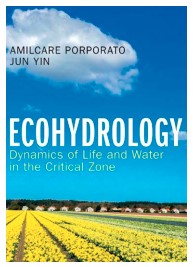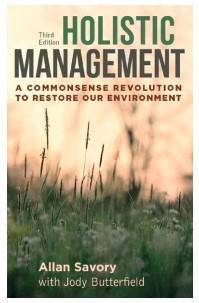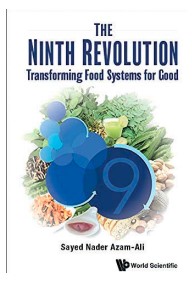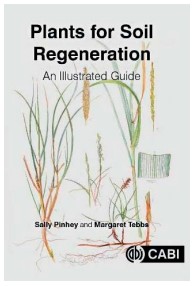If you are like us, then you don’t know where to start when it comes to other reading apart from farming magazines.
However, there is so much information out there that can help us understand our businesses, farm better and
understand the position of non-farmers. We have listed a few more books you might find interesting, challenge the
way you currently think and help you farm better.
Ecohydrology: Dynamics of Life and Water
in the Critical Zone

Ecohydrology is a fastgrowing branch of science at the interface of ecology and geophysics, studying the interaction between soil, water, vegetation, microbiome, atmosphere, climate, and human society. This textbook gathers the fundamentals of hydrology, ecology, e n v i r o n m e n t a l engineering, agronomy, and atmospheric science to provide a rigorous yet accessible description of the tools necessary for the mathematical modelling of water, energy, carbon, and nutrient transport within the soil-plant-atmosphere continuum.
By focusing on the dynamics at multiple time scales, from the diurnal scale in the soil-plant-atmospheric system, to long-term stochastic dynamics of water availability responsible for ecological patterns and environmental fluctuations, it explains the impact of hydroclimatic variability on vegetation and soil microbial systems through biogeochemical cycles and ecosystems under different socioeconomical pressures. It is aimed at advanced students, researchers and professionals in hydrology, ecology, Earth science, environmental engineering, environmental science, agronomy, and atmospheric science.
Holistic Management: A Commonsense Revolution to Restore Our Environment

Fossil fuels and livestock grazing are often targeted as major culprits behind climate change and desertification. But Allan Savory, cofounder of the Savory Institute, begs to differ. The bigger problem, he warns, is our mismanagement of resources. Livestock grazing is not the problem; it’s how we graze livestock. If we don’t change the way we approach land management, irreparable harm from climate change could continue long after we replace fossil fuels with environmentally benign energy sources.
Holistic management is a systems-thinking approach for managing resources, developed by Savory decades ago after observing the devastation of desertification in his native Southern Rhodesia (now Zimbabwe). Properly managed livestock are key to restoring the world’s grassland soils, the major sink for atmospheric carbon, and minimizing the most damaging impacts on humans and the natural world.
This audiobook updates Savory’s paradigm-changing vision for reversing desertification, stemming the loss of biodiversity, eliminating fundamental causes of human impoverishment throughout the world, and climate change. Reorganized chapters make it easier for listeners to understand the framework for holistic management and the four key insights that underlie it.
This long-anticipated new edition is written for new generations of ranchers, farmers, ecological and social entrepreneurs, and development professionals working to address global environmental and social degradation. It offers new hope that a sustainable future for humankind and the world we depend on is within reach.
Ninth Revolution, The: Transforming Food Systems For Good

We are at a critical point in human history and that of the planet. In this book, a world leader in agricultural research, Professor Sayed Azam-Ali, proposes a radical transformation of our agrifood system. He argues that agriculture must be understood as part of global biodiversity and that food systems have cultural, nutritional, and social values beyond market price alone. He describes the perilous risks of relying on just four staple crops for most of our food and the consequences of our current agrifood model on human and planetary health.
In plain language for the wider public, students, researchers, and policy makers, Azam-Ali envisions the agrifood system as a global public good in which its practitioners include a new and different generation of farmers, its production systems link novel and traditional technologies, and its activities encompass landscapes, urban spaces, and controlled environments. The book concludes with a call to action in which diversification of species, systems, knowledge, cultures, and products all contribute to The Ninth Revolution that will transform food systems for good.
Plants for Soil Regeneration: An Illustrated Guide

This book is a c o m p r e h e n s i v e , beautifully illustrated colour guide to the plants which farmers, growers and gardeners can use to improve soil structure and restore fertility without the use and expense of agrichemicals. Information based on the latest research is given on how to use soil conditioning plants to avoid soil degradation, restore soil quality and help clean polluted land. There are 11 chapters: 1 to 6 cover soil health, nitrogen fixation, green manures and herbal leys, bacteria and other microorganisms, phytoremediators and soil mycorrhiza (plant-fungal symbiosis). Chapter 7 has plant illustrations, with climate range and soil types, along with their soil conditioning properties and each plant is presented with a comprehensive description opposite a detailed illustration, in full colour. Chapters 8 to 10 examine soil stabilisers, weeds and invasive plants, and hedges and trees and the final chapter, contains 5 case studies with the most recent data, followed by an appendix and glossary. The book allows the reader to identify the plants they need quickly and find the information necessary to begin implementation of soil regeneration.